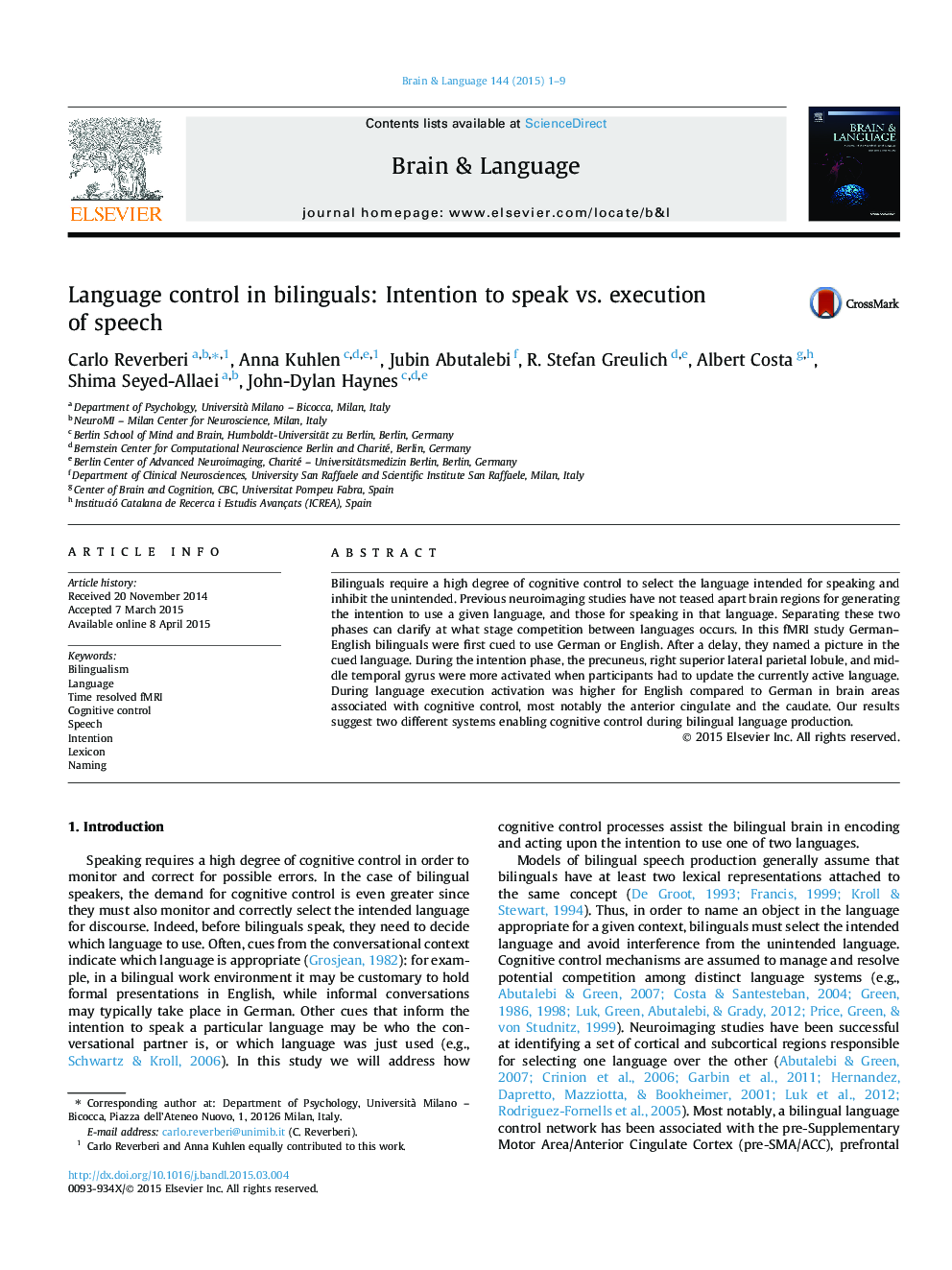| Article ID | Journal | Published Year | Pages | File Type |
|---|---|---|---|---|
| 925267 | Brain and Language | 2015 | 9 Pages |
•We tease apart intention to use a language from speaking the selected language.•During intention phase higher activity for updating the intended language.•During language execution neural activity distinguishes speaking in L1 vs. L2.•Language control areas in execution phase are not involved in intention phase.•We propose two systems of cognitive control during bilingual language production.
Bilinguals require a high degree of cognitive control to select the language intended for speaking and inhibit the unintended. Previous neuroimaging studies have not teased apart brain regions for generating the intention to use a given language, and those for speaking in that language. Separating these two phases can clarify at what stage competition between languages occurs. In this fMRI study German–English bilinguals were first cued to use German or English. After a delay, they named a picture in the cued language. During the intention phase, the precuneus, right superior lateral parietal lobule, and middle temporal gyrus were more activated when participants had to update the currently active language. During language execution activation was higher for English compared to German in brain areas associated with cognitive control, most notably the anterior cingulate and the caudate. Our results suggest two different systems enabling cognitive control during bilingual language production.
